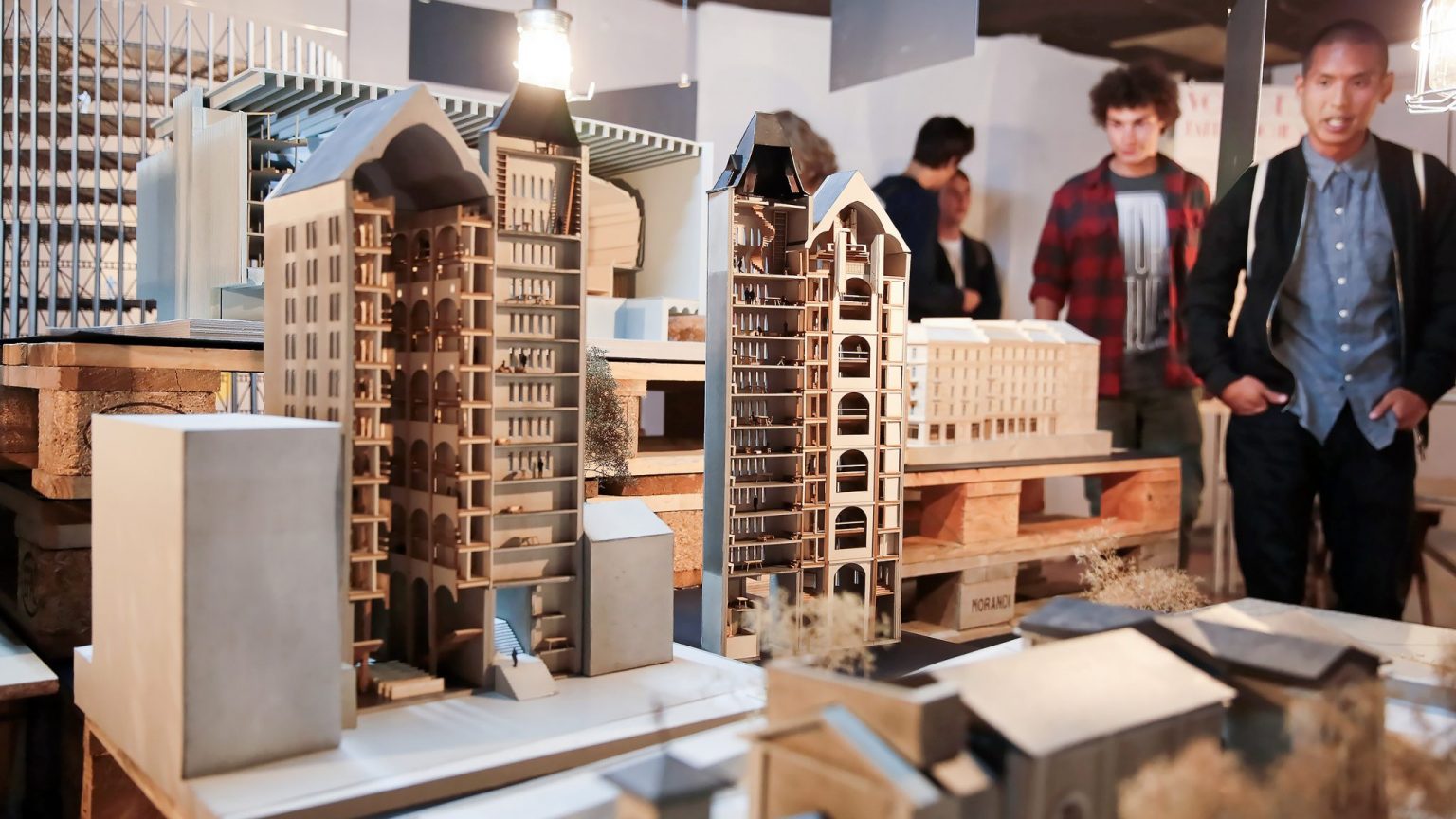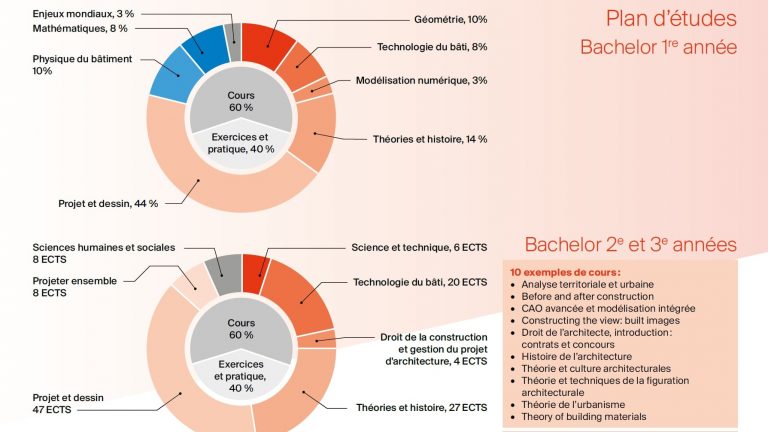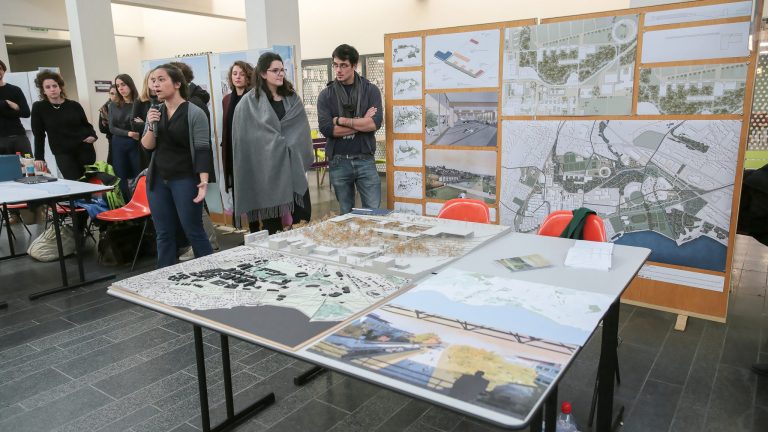Architecture

Volume modeling, studying the light, daring to try new materials, or designing a structure are all tasks in which architects must demonstrate great creativity. The challenges of sustainable development which, for example, means careful use of energy, space, and soil, are today part and parcel of their approach.
However, architects are not always satisfied with purely conceptual work that can be carried out at a drawing table or in front of a screen: after having developed a project, it also falls to them to prepare its execution and to manage the building work, not unlike the conductor of an orchestra, overseeing the execution of the work which must be completed within the framework of the set budget and fixed deadlines. The architects’ field of activity has greatly widened during the past few years, because they can now practice their skills in fields ranging from heritage management to the remediation of sites and property valuation.
Training in Architecture must be able to meet varied problems. It relies on a structured methodological approach which incorporates the interdependency of the architect’s levels of action, namely land, city, and building.
Today, Bauhaus’ almost century-old premise “From the door handle to the city” must therefore be revised because architects work in increasingly complex fields which cannot be reduced to one discipline but which call for a set of combined skills.
Program presentation
Studies in Architecture are not structured like those in EPFL’s other departments: the teaching relies on the perpetual dialogue between practice and theory. During their first year of studies, the students take classes dealing with the history and theory of architecture, the city and land, building techniques, as well as means of representing and modeling, all while working in parallel at the workshop in which they develop an architectural project. Sciences such as geometry and physics are also part of the training. Furthermore, the practice of an “architectural project” enables all the students to better understand theoretical teaching which in turn feeds their own reflections and their implementation in the project.
Throughout their studies, the students have their own personal workplace in a workshop, access to computing tools and machines in the models workshop. A well-stocked library is also at their disposal, and they have the opportunity to attend numerous lectures on art, science, architecture or human sciences, as well as exhibitions on campus that are at the cutting-edge of these fields.
Study visits, workshop visits, and personal travel are important factors in the training, because they put the students in contact with the built work and its historical, natural, and sociocultural context. They also provide opportunities to learn sketching and photographic techniques, indispensable tools for an architect. Furthermore, all the students have to do a one-year professional internship between the Bachelor’s and Master’s degrees.
Bachelor: simplified study plan
Master: prospects
A solid and methodical theoretical, scientific and applied training at the Bachelor’s level is followed during the Master’s studies by an in-depth approach to questions linked to issues currently at stake: preservation of the environment, promotion of sustainable development, energy-wise optimization of constructions, use of new materials, need to keep under control production costs and anticipation of the socio-economic impact of decisions taken during planning.
Please note that the information regarding the programs’ structure as well as the simplified study plans may be subject to change and that they are not legally binding. Only the official regulations and study plans are binding.
Career prospects

Architects are also called upon to assist governments in the fields of territorial and urban planning, along with heritage conservation. Other less obvious opportunities – such as theatrical set design, publishing or real estate management – are also possible.
Lastly, another option consists in continuing education by undertaking a PhD, and so opening the path to teaching and research in fields as fascinating as integrated design, sustainable development and urban sociology.
Contact
To learn more about this program, please use the following contacts:
+41 21 693 32 11

